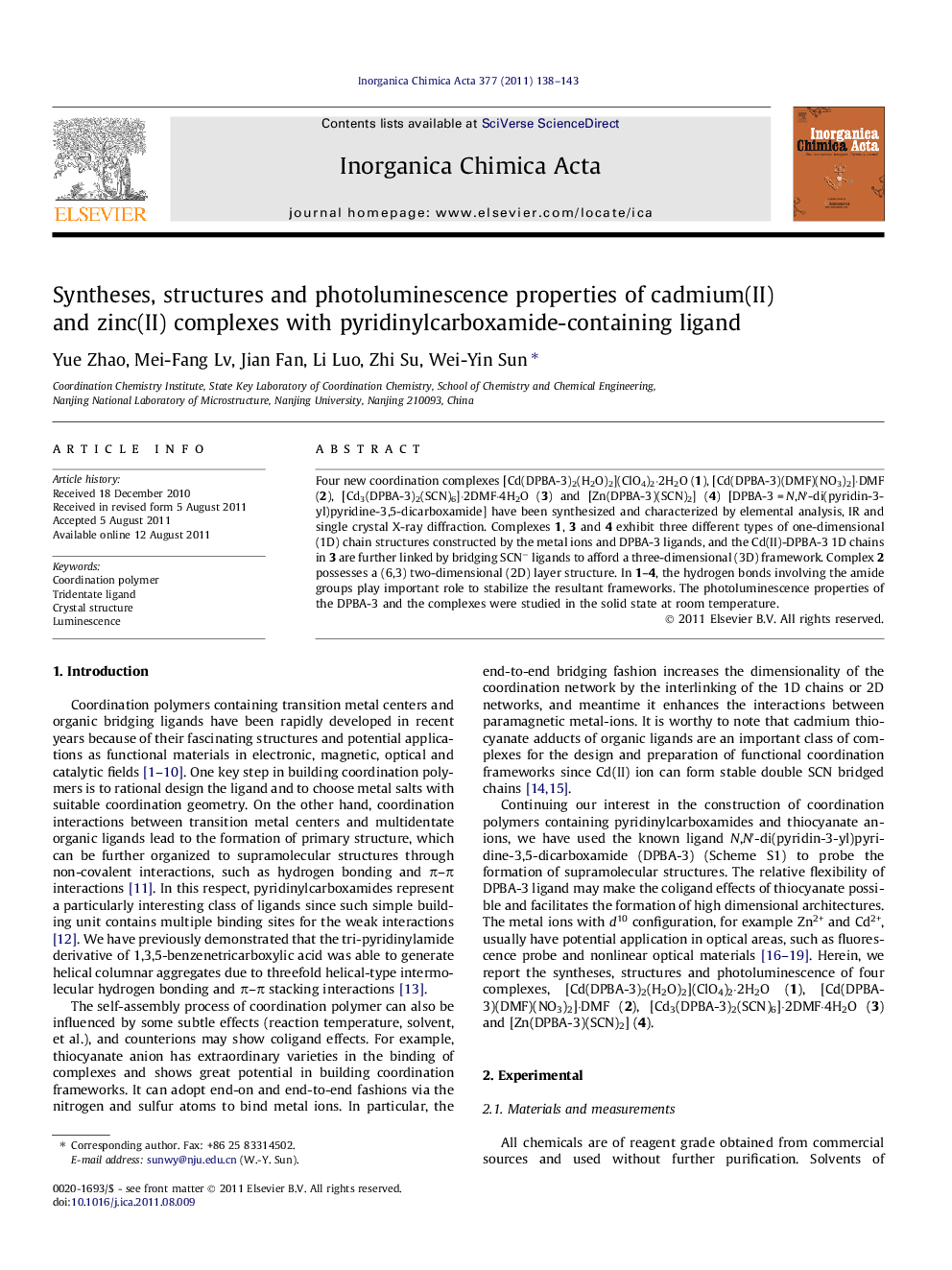| Article ID | Journal | Published Year | Pages | File Type |
|---|---|---|---|---|
| 1312539 | Inorganica Chimica Acta | 2011 | 6 Pages |
Four new coordination complexes [Cd(DPBA-3)2(H2O)2](ClO4)2·2H2O (1), [Cd(DPBA-3)(DMF)(NO3)2]·DMF (2), [Cd3(DPBA-3)2(SCN)6]·2DMF·4H2O (3) and [Zn(DPBA-3)(SCN)2] (4) [DPBA-3 = N,N′-di(pyridin-3-yl)pyridine-3,5-dicarboxamide] have been synthesized and characterized by elemental analysis, IR and single crystal X-ray diffraction. Complexes 1, 3 and 4 exhibit three different types of one-dimensional (1D) chain structures constructed by the metal ions and DPBA-3 ligands, and the Cd(II)-DPBA-3 1D chains in 3 are further linked by bridging SCN− ligands to afford a three-dimensional (3D) framework. Complex 2 possesses a (6,3) two-dimensional (2D) layer structure. In 1–4, the hydrogen bonds involving the amide groups play important role to stabilize the resultant frameworks. The photoluminescence properties of the DPBA-3 and the complexes were studied in the solid state at room temperature.
Graphical abstractFour new coordination complexes with N,N′-di(pyridin-3-yl)pyridine-3,5-dicarboxamide have been synthesized and structurally characterized. The complexes show 1D chain, (6,3) 2D network and 3D framework structures. The Luminescence of the complexes was investigated.Figure optionsDownload full-size imageDownload as PowerPoint slideHighlights► Coordination polymers with N,N′-di(pyridin-3-yl)pyridine-3,5-dicarboxamide. ► Complexes with 1D chain, 2D network and 3D framework structures. ► Luminescence of the complexes.
